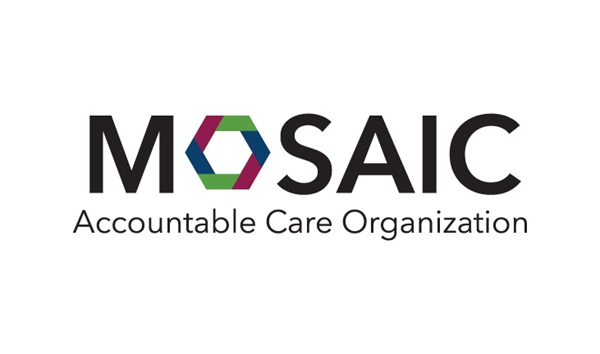Local Patients Help Re-Define Low-Grade Brain Tumor Diagnosis
DETROIT – Sixty-seven patients from the Hermelin Brain Tumor Center at Henry Ford Hospital and their families made important contributions to a national cancer study that proposes a change in how some brain tumors are classified – and ultimately treated.
Published in the July 25 issue of the New England Journal of Medicine, the study reveals that a tumor’s DNA – not just tumor stage and what the affected cells look like under a microscope – is key to determining if a lower-grade malignant brain tumor (glioma) may rapidly progress to glioblastoma, the most common and deadliest form of malignant brain cancer.
The findings, according to Hermelin Brain Tumor Center researchers involved in the national study, could result in earlier and more aggressive treatment for those tumors projected to be on the fast path. Looking at DNA changes may also open treatment options in a move toward precision medicine.
“Our study is the first step in a new era of glioma diagnosis and treatment, and we couldn’t have done it without the contributions of the 67 metro Detroit-area patients and their families,” says study co-author Tom Mikkelsen, M.D., co-director of the Hermelin Brain Tumor Center at Henry Ford, one of the 43 cancer centers involved in the study.
Glioma is the most common type of malignant brain tumor with 6,500 expected cases of grade II and grade III, and 12,500 expected cases of grade IV (glioblastoma) each year.
Though glioblastoma has notably poor prognosis, the lower grades have survival that is harder to predict. Some patients may progress and succumb by 6 months, while others may survive 15 years. In this study, diagnosis criteria using changes in tumor DNA was found to improve the prediction.
Glioma is very difficult to treat successfully because, rather than being a clearly defined mass, the tumor blends with healthy brain tissue and sends out tentacles of microscopic cancer cells. This makes complete neurosurgical resection impossible and leaves the chance for tumor recurrence and progression.
“This new study holds a great deal of promise for our patients because we will no longer have to wait the months or years after surgery to determine if a particular glioma will progress to a glioblastoma,” says, Steven N. Kalkanis, M.D., co-director of the Hermelin Brain Tumor Center and chair of the Henry Ford Department of Neurosurgery.
“Now genes in the tumor can be quickly analyzed to look for any changes, deletions or other mutations, allowing us the opportunity to treat gliomas that may become glioblastomas more aggressively at the start, potentially leading to longer survival.”
For more than 100 years, clinicians have been diagnosing and determining treatment for gliomas based on histologic classes developed in the early 1900s. Using this method, gliomas were classified microscopically on the basis of their similarity to a specific cell of origin (astrocyte, oligodendrocyte or a mixture of these cells), often making diagnosis subjective.
But diagnosis based on the molecular make up of a tumor takes away a great deal of uncertainty and offers a more concrete diagnosis.
With this new study, led by Emory University neuropathologist Daniel J. Brat, M.D., Ph.D., researchers performed an analysis of 293 lower-grade gliomas (grade II and grade III) from adults. The samples were integrated with patient clinical data to test for associations.
In addition to leading the analysis of clinical data, the Hermelin Brain Tumor Center, part of the Henry Ford Cancer Institute, contributed nearly 25 percent of the tumor samples used in the study. The Hermelin Brain Tumor Center has one of the country’s most extensive brain tumor banks, which houses more than 2,000 samples, as well as corresponding treatment and outcome data.
For the study, gliomas were clustered into classes based on their genetic similarity. These clusters were then compared against tumor grade, histologic class and molecular subtype.
When the researchers grouped gliomas according to IDH gene mutation and chromosome deletion status, they found three distinct molecular classes emerge that were more consistent with IDH gene mutation and 1p/19q chromosome deletion than with histologic class.
These findings suggest that lower-grade gliomas with wild-type IDH gene mutations are likely to behave like tumors diagnosed as glioblastoma with wild-type IDH.
“The new diagnostic class for glioma is more homogeneous molecularly than the previous histological classes. It’s a new opportunity to look at data and classify gliomas in more consistent molecular classes and see patterns developing,” says the study lead for clinical data analysis Laila Poisson, Ph.D., a researcher at the Hermelin Brain Tumor Center.
“They say if you can name the devil you can take his power; we’re getting closer to naming this devil.”
Dr. Poisson notes that more research is still needed on this topic and work is being done with the World Health Organization to rewrite the glioma grading system.
Learn more about the Hermelin Brain Tumor Center.
MEDIA CONTACT:
Krista Hopson Boyer
kboyer1@hfhs.org
.svg?iar=0&hash=F6049510E33E4E6D8196C26CCC0A64A4)

/hfh-logo-main--white.svg?iar=0&hash=ED491CBFADFB7670FAE94559C98D7798)





